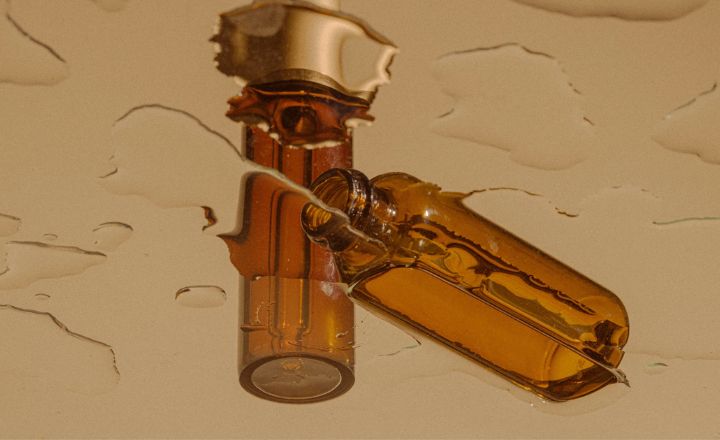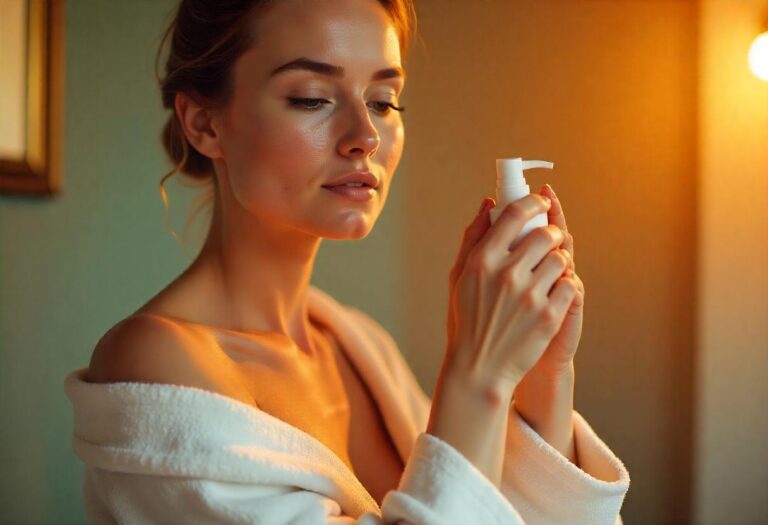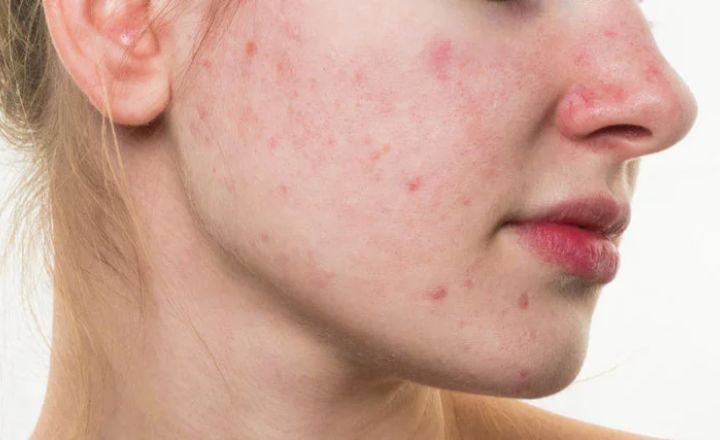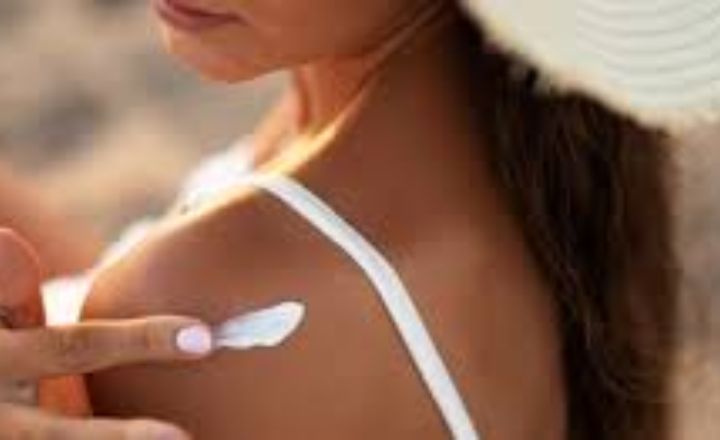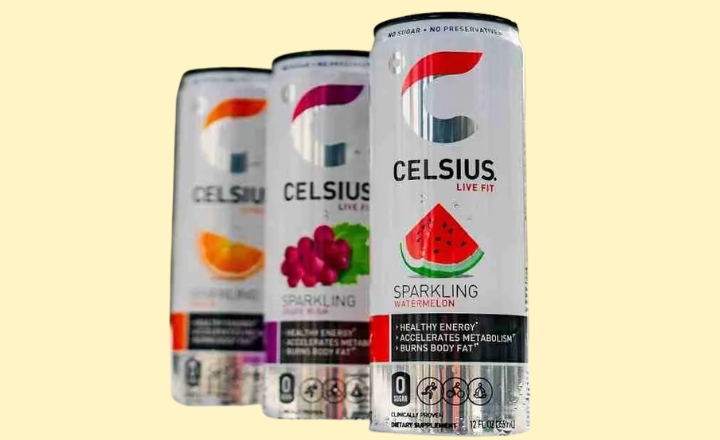Can I use Retinol and Tretinoin Together?
If you’ve just started to use topical retinoids, you’ve probably asked yourself this question “can i use retinol and tretinoin together?”
Over the years, I’ve tried a lot of retinoids from beginner-friendly retinol and retinaldehyde to adapalene and even prescription-strength tretinoin. Along the way, I’ve learned which one works well and which combinations are better to stay away from.
Here’s the actual fact: using retinol and tretinoin together isn’t recommended. While it might seem like doubling up could speed up results, in reality it actually leads to more irritation and sensitivity. In this article, I’ll break down why this combo isn’t the best idea and share more tips to get the most out of your retinoid routine for healthier, glowing skin.
What is a Retinoid Product?
If you’re being confused about the difference between tretinoin, Retin-A, retinyl palmitate, and all the other retinoids, then don’t worry, it’s a super common source of confusion, even among skincare professionals.

Here’s the simple trick: “retinoid” is just the umbrella term for all vitamin A-based ingredients. No matter which vitamin it is, they all eventually convert into retinoic acid once they’re on your skin. Think of it like the word haircare it covers shampoo, conditioner, and treatments, but doesn’t specify the product someone means.
So, retinol is a retinoid. Tretinoin is a retinoid. Retinyl palmitate is also a retinoid. But if someone says, “I’m using a retinoid,” that could mean anything from a prescription-strength cream like tretinoin to a gentle over-the-counter serum.
Here is a complete guide on Medik8 Crystal Retinal vs Retinol Which One is Right for You
Prescription Retinoid Vs. Over The Counter Retinol Products
When it comes to retinoid skincare, there are really just two main categories: prescription retinoids and over-the-counter (OTC) retinoids.

Prescription retinoids are the stronger, medical-grade versions that are prescribed by a doctor or dermatologist. In the US and UK, the most common ones include:
- Tretinoin (Retin-A): a topical medication that treats acne and helps reduce fine lines and wrinkles.
- Tazarotene (Tazorac): effective option, often prescribed for acne and psoriasis.
- Trifarotene: a recent prescription retinoid, used for acne.
- Adapalene (Differin): once prescription-only, but now available OTC in the US and in some areas of the UK.
In some countries, like Mexico, you can buy tretinoin and other prescription retinoids without a prescription. But in the US and UK, you must have a dermatologist’s prescription, GP, or an online provider such as Curology, Dermatica, or Skin + Me.
OTC retinoids are the more accessible options without a prescription. These include retinol, retinaldehyde, and retinyl palmitate. They aren’t as strong as prescription forms, but they’re gentler, which makes them a great choice for beginners or anyone with sensitive skin.
The takeaway is simple: prescription retinoids deliver faster, more effective results but require medical oversight, while OTC retinoids are milder, widely available, and perfect for easing into a retinoid routine.
How to Pronounce Tretinoin
I want to clear this one up quickly, because it is mispronounced a lot and clearly, most of people have been googling it too.
It’s pronounced: Treh-tin-oh-in.
And while we’re here, let’s correct another mistake: “tretinoid” isn’t actually a word. Tretinoin is just one type of retinoid, which is where the mix-up usually comes from.
So How do Retinoids Actually Work?
So here’s the answer for can you use tretinoin and retinol together?
Retinoids work by speeding up the results. Think of it like pressing the fast-forward button on your skin’s natural cycle. That’s totally different from exfoliating acids like salicylic acid or glycolic acid, which sort of shed dead skin cells so they are replaced more easily.
This is also why retinoids aren’t exfoliants, even though they still make your skin smoother and more even. Instead of scrubbing off dead cells, they’re helping your skin to work harder and faster .
But here’s the fact: when you first start, this sudden boost can make your skin feel dry, sensitive, or irritated. Most people also go through what’s called the purge, that annoying phase where your breakouts actually get worse before they get better.
It feels so unfair (I know!) since retinoids are meant to help acne, not cause it. But really, it’s just your skin pushing all the dirt to the surface. But the actual fruit is if you stick with it, your skin usually adjusts and those side effects calm down.
Why a Retinoid Can Cause New Acne Breakouts
If you’ve started a retinoid skincare and your skin get worse instead of better, don’t panic you’re probably having retinoid purge. Think of it like twisting up a lip balm: retinoids speed up cell turnover, which means hidden acne and clogged pores get pushed to the surface faster.

This is what people often call the retinol purge, tretinoin purge, or simply the acne purge. It can feel demotivating, but it’s actually a sign that the retinoid is doing its job under the surface.
The skin purging timeline isn’t the same for everyone. Some people only deal with a few weeks of purging, while others especially when starting stronger prescription options like tretinoin might notice it lasts up to 3-4 months. OTC retinol usually causes a gentler, shorter purge.
Yes, the purge is one of the more frustrating retinoid side effects, but the good thing is its temporary. Once your skin adjusts, the breakouts fade, and you’ll finally get the results: smoother texture, fewer pimples, and a healthier, clearer glow.
Benefits of Retinol Use
The benefits of retinoids are quite noticeable, which is why they all over social media. One of the most common stories shared online is how a retinoid for acne can completely change someone’s skin from constant breakouts to a clearer, healthier-looking complexion.
Of course, acne-prone skin can still be healthy, but there’s no denying how well retinoids are studied and how effective they can be. Among them, tretinoin is the main character. It’s been around the longest, so it has the most research behind it. The benefits of tretinoin go beyond acne it’s also one of the best ingredients for reducing fine lines, boosting collagen production, and helping skin look smoother and more fresh.
Tretinoin was originally introduced for acne prone treatment, but over the years researchers noticed its powerful anti-aging benefits too. With a constant use you’ll notice firmer skin, fewer wrinkles, and an overall fresher look.
Newer retinoids, like adapalene, are showing promise as well, though they haven’t been studied for as long.
Another big benefit of retinoids is their actions in pigmentation. Whether it’s dark spots, uneven skin tone, or post-acne marks, retinoids work to gradually fade them, leaving skin clearer and more even.
Potential Side Effects Of Using Retinol And Tretinoin Together
A lot of people ask: can you use tretinoin and retinol together? It sounds like a good idea after all, if one works well then why can’t both work even better? Unfortunately, that’s not how it works. Using retinol and tretinoin together in the same routine usually just means double the irritation, not double the results.
Both ingredients do the same job: they speed up skin cell turnover. So when you combine them, you’re more likely to make your skin vulnerable with side effects like dryness, redness, peeling, or even a stronger acne purge.
Now, you might ask: “What if I don’t layer them, can you use tretinoin and retinol on different days?” As for this, most dermatologists will tell you it’s better to use only one. That way, your skin can adjust properly, and you’ll actually see results without making your skin more sensitive than it needs to be.
Choose either tretinoin or retinol, and be consistent. One good retinoid, used regularly, will give you far better results than trying to juggle both.
Signs Of A Damaged Skin Barrier When Using A Retinoid
One of the worst pitfalls of using retinoids like tretinoin or retinol is that they can destroy your skin barrier if you overuse it.
Your skin has this natural protective layer (kind of like a shield), and when it gets destructed, even your regular moisturizer might sting. If that’s happening, it’s quite a clear sign your barrier is struggling. I’ve experienced this myself, and it’s not fun.

Here’s what’s helped me:
Take a break from actives. That means stop using tretinoin, retinol, vitamin C, exfoliating acids, basically anything strong. Use gentle and hydrating products. (Hyaluronic acid is always a safe bet!)
Use retinoids back slowly. Once your skin calms down, bring back either retinol or tretinoin on its own, don’t mix them together.
Use a barrier repair serum or cream. These are wonderful additions for keeping your skin stronger so it can actually handle retinoids without any irritation.
At the end of the day, the stronger your skin barrier, the better your results will be whether you’re using retinol and tretinoin together on different days or just sticking to one.
How Often To Use A Retinoid
I get many questions about retinoids, so here is a guide to make things clearer. While I do sell it, most of the info can also be found on TikTok, Instagram, YouTube, or my blog. The guide just gsther everything together in one easy-to-go place.
Here’s how I recommend easing into retinoid use, whether you’re using a lower or higher concentration:
- Start with 1-2 times per week for the first 1-2 months.
- Then go to 2-3 times per week for the next 2-3 months.
- Finally, work your way up to 3-4 times per week after 3-4 months.
A lot of people think you need to use a retinoid every day to see results, but that’s not true. Every other day works just as well. When you’re starting, it’s all about finding that sweet spot between being consistent and avoiding irritation. Sure, you might get through the acne purge faster if you use it daily, but you’ll probably end up with irritated skin!
Starting slowly with 1-2x and 2-3x per week is a gentler approach that helps your skin adjust.
Also, while your doctor or the packaging might say to use it every day from day one, that advice is a little outdated. A quick search online will show that easing into retinoid use is usually a much better experience.
How To Apply A Retinoid Correctly
Use just a pea-sized amount and apply it gently over entire face. Retinoids aren’t meant to be spot treatment if you only tap them on your breakouts, you’ll miss out on most of the anti-aging, acne-fighting, and skin-smoothing benefits.
Night-time is the best one because your skin naturally goes into repair mode during sleep. Some retinoids, like adapalene can be used during the day, but most including tretinoin work best at night to avoid sun exposure.
After cleansing, ensure that your skin is completely dry; pat it with a clean cloth until bone dry. Wait 10–20 minutes before applying other products. And avoid mixing of retinoids with benzoyl peroxide, salicylic acid, AHAs, or harsh exfoliants, as that might result in irritation.
Pro tip: Stick with it consistently, and you’ll see the results in fine lines, acne scars, hyperpigmentation, and overall skin texture.
What About The Sandwich Method?
If you’re confused about retinol and tretinoin can be used together, or if it’s okay to layer a retinol serum and tretinoin, here’s what I’ve learned:
For most people, it’s better not to use them at the same time. Both are strong retinoids, and mixing them might easily cause dryness, redness, or irritation, especially if your skin is sensitive.
A gentler way to do it is to use it in alternate nights, use retinol one night, tretinoin the next. That way, your skin still gets the anti-aging, acne-fighting, and skin-smoothing benefits without being overloaded.
Everyone’s skin is different, so if you try using retinol and tretinoin together and it feels too harsh, don’t worry just give your skin a break and adjust your routine.
You can also read my post on Gentle Yet Effective:15 Best Cleanser To Use With Tretinoin & Retinoid
So, Can You Use Retinol And Tretinoin Together?
Honestly, can you use retinol and tretinoin together? in the same routine isn’t a good idea it’ll just leave your skin irritated and dry.
The only time it might work is if you alternate a stronger retinoid with a weaker one on different nights. But avoid complicating things off.
Keeping it simple one retinoid at a time is often the easiest way to see results without stressing your skin.
Conclusion
Using retinol and tretinoin together isn’t a great idea it can leave your skin dry and irritated. Stick to one retinoid at a time, or alternate them on different nights if you want to try both. Keep things simple, be patient through the purge, and your skin will reward you with smoother, clearer, and healthier-looking skin.
Should I use retinol or tretinoin first?
Whether you want to use retinol and tretinoin together and use any of them first isn’t a good idea. Both are strong retinoids, and layering them can easily lead to dryness, redness, or irritation. A simpler way is to pick one to use, or alternate night retinol one night, tretinoin the next so your skin can adjust and still get the best results.
Can I use tretinoin and retinol on alternate nights?
Alternating tretinoin and retinol is a simple way to enjoy the benefits of both without destroying your skin. It gives your skin time to manage, preventing dryness and irritation, and still lets you see the anti-aging, acne-fighting, and smoothing results over time.
Can I use tretinoin in the morning and retinol at night?
Both retinol and tretinoin make your skin extra sensitive to the sun, so using tretinoin in the morning can lead to irritation or sun damage. It’s much safer to apply at night, letting your skin repair and absorb all the benefits while you sleep.


